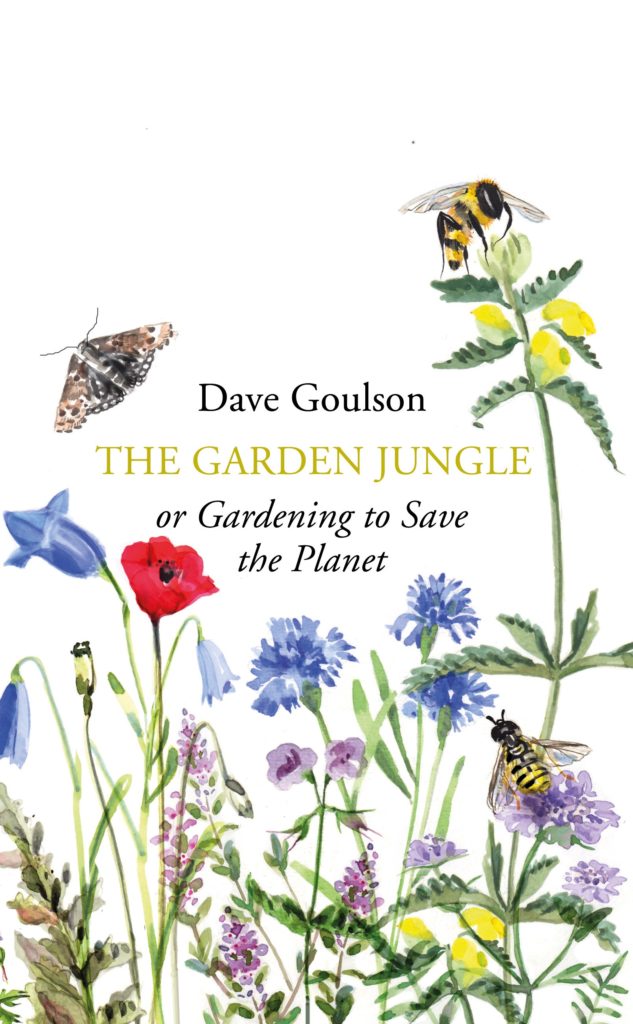This Week’s Guest Blogger is Dave Goulson

Let the ‘Weeds’ Grow
Professor Dave Goulson, University of Sussex
Successful wildlife gardening is as much about what you don’t do as what you do. This is not to say that a wildlife garden has to be untidy. Many imagine a wildlife garden as an unruly tangle of brambles, nettles and dandelions, and it is true that a laissez-faire garden like this will certainly attract a lot of wildlife, but it is also perfectly possible to have a tidy and beautiful garden that is teeming with life (though tidiness does of course tend to require a little more work).
If I could give you just one wildlife gardening tip, it would be this. You can get rid of all the weeds in your garden in a heartbeat, just by renaming them wildflowers. The concept of a weed is something we have constructed. Why do we endlessly persecute dandelions, groundsel, willowherbs and so on, at great personal effort, and usually without much success? Does it matter if there are buttercups and daisies in your lawn? Many of us spend money on spraying their lawn with selective broadleaf herbicides, intended to kill everything but the grass. Buttercups and dandelions are beautiful native wildflowers. Ease off on the mowing, and they will burst into bloom, adding colour and attracting insect life; bees, hoverflies and so on.
Aside from those in the lawn, wildflowers can be an attractive addition to herbaceous borders. I have teasel, viper’s bugloss, marjoram, foxgloves, mallows, campions, comfrey, betony, deadnettles and woundworts mixed up with the usual garden favourites; lavender, catmint, coreopsis and so on. Viper’s bugloss is one of my favourites – producing beautiful blueish purple flower spikes in July and August that bumblebees adore. Controversially, I also have ragwort, loathed by horse lovers as it is toxic when dried in hay. But this is a wonderful plant for insects, attracting bees, hoverflies, butterflies, and of course the yellow and black caterpillars of the cinnabar moth. Native wildflowers are worth including not just for their beauty but also because they are often the foodplant of herbivorous insects such as moths, butterflies, true bugs or leaf beetles, so they help to support a whole ecosystem. My red campion flowers attract bees, but also attract the campion moth which lays its egg on the seed pod and the young caterpillar feasts on the developing seeds.
Relax, soak up the summer sun, and enjoy the weeds!

Dave Goulson’s new book, The Garden Jungle, is on sale now in all good bookshops.
